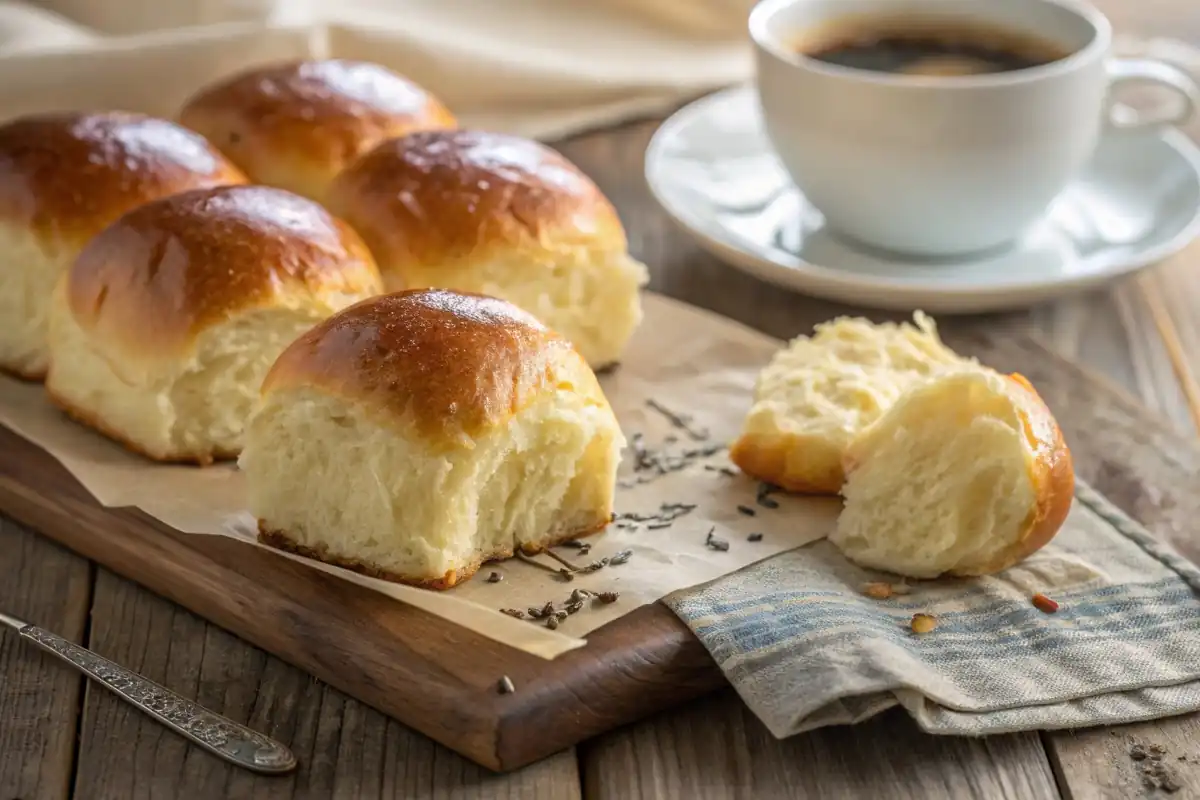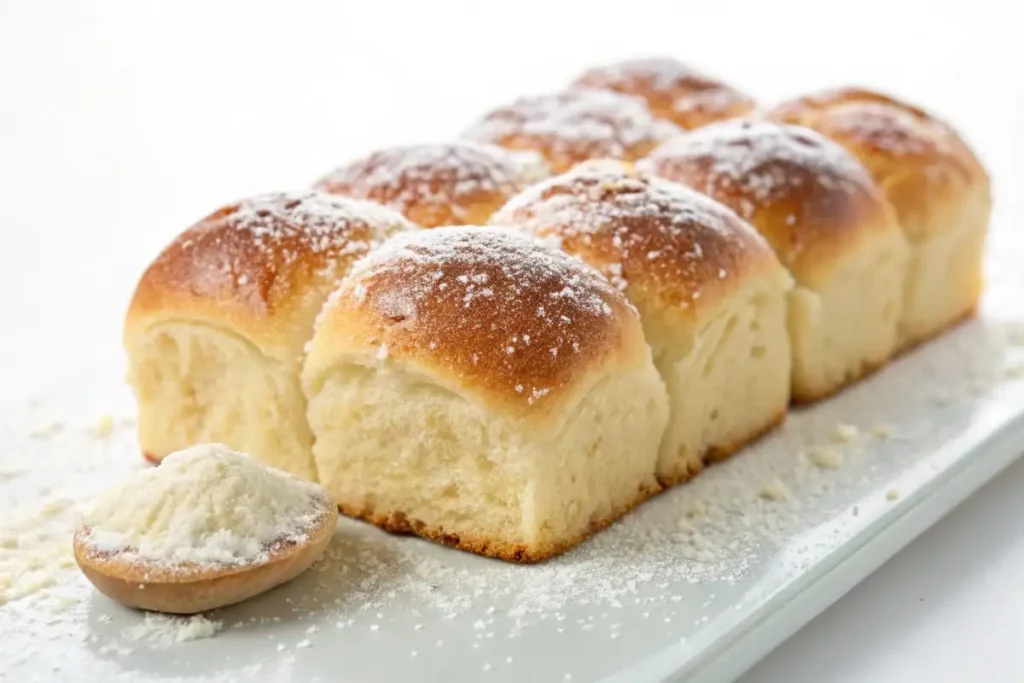Brioche is a rich, delicious bread. This guide explores the best flour for achieving that perfect, buttery crumb.
Brioche is a classic bread. Knowing the right traditional flour is key. This guide will help you bake perfect brioche every time.
What is brioche traditional flour ?
Brioche is a bread of French origin. Its richness comes from butter and eggs. The result is a tender, slightly sweet bread. It’s often used for pastries and breakfast treats.
History of Brioche
Brioche has a long history. It dates back to medieval France. It was initially a luxury item. Only the wealthy could afford it because of the rich ingredients. Over time, it became more accessible. Today, it’s enjoyed worldwide.
Recipes Using Brioche Traditional Flour
Here are some brioche recipes. They highlight the use of flour.

Classic brioche traditional flour Loaf Recipe
Yields: 1 loaf
Prep time: 30 minutes
Rise time: 2-3 hours
Bake time: 30-35 minutes
This recipe uses bread flour. It creates a classic brioche loaf. It’s great for sandwiches or toast. Enjoy it with butter and jam.
Ingredients:
- 3 1/2 cups (420g) bread flour (brioche traditional flour)
- 1/4 cup (50g) sugar
- 1 teaspoon salt
- 2 1/4 teaspoons (1 packet) active dry yeast
- 1/2 cup (120ml) warm milk (105-115°F)
- 4 large eggs, lightly beaten
- 1 cup (226g) unsalted butter, softened and cut into cubes
- 1 egg, beaten (for egg wash)
Equipment
- Stand mixer
- Loaf pan (9×5 inch)
- Kitchen scale
- Mixing bowls
- Plastic wrap

Instructions
- Activate the yeast: In a small bowl, mix warm milk, sugar, and yeast. Let stand for 5-10 minutes until foamy. This ensures the yeast is active.
- Combine dry ingredients: In the bowl of a stand mixer, combine bread flour and salt. Use a whisk to combine the ingredients.
- Add wet ingredients: Add the yeast mixture and beaten eggs to the flour. Mix on low speed until just combined. The dough will appear shaggy.
- Incorporate the butter: With the mixer on low speed, add the softened butter, one cube at a time, mixing well after each addition. This will take about 10-15 minutes. The dough will be very soft and sticky.
- First rise (bulk fermentation): Cover the bowl with plastic wrap and let rise in a warm place for 1.5-2 hours, or until doubled in size. The time may vary.
- Chill the dough: Punch down the dough to release the air. Cover and refrigerate for at least 2 hours, or preferably overnight. This chilling step is crucial.
- Shape the dough: Turn the dough out onto a lightly floured surface. Gently shape it into a loaf.
- Second rise (proof): Place the dough in a greased 9×5 inch loaf pan. Cover loosely with plastic wrap and let rise in a warm place for 1-1.5 hours, or until the dough rises about 1 inch above the rim of the pan.
- Preheat the oven: Preheat oven to 350°F (175°C).
- Egg wash: Brush the top of the loaf with the beaten egg. This will give it a golden crust.
- Bake: Bake for 30-35 minutes, or until the loaf is golden brown and the internal temperature reaches 190-200°F (88-93°C).
- Cool: Let the loaf cool in the pan for 10 minutes before transferring it to a wire rack to cool completely.
- Slice and enjoy: Slice the loaf with a serrated knife and enjoy. Serve it with butter, jam, or your favorite topping.
Chocolate Brioche Recipe
Yields: 1 loaf
Prep time: 35 minutes
Rise time: 2-3 hours
Bake time: 35-40 minutes
This recipe adds chocolate to brioche. It’s a sweet, indulgent treat. Use high-quality chocolate for the best flavor.
Ingredients:
- 3 1/2 cups (420g) bread flour (brioche traditional flour)
- 1/4 cup (50g) sugar
- 1 teaspoon salt
- 2 1/4 teaspoons (1 packet) active dry yeast
- 1/2 cup (120ml) warm milk (105-115°F)
- 4 large eggs, lightly beaten
- 1 cup (226g) unsalted butter, softened and cut into cubes
- 6 ounces (170g) semi-sweet chocolate, chopped
- 1 egg, beaten (for egg wash)
Equipment
- Stand mixer
- Loaf pan (9×5 inch)
- Kitchen scale
- Mixing bowls
- Plastic wrap
Instructions
- Activate the yeast: In a small bowl, mix warm milk, sugar, and yeast. Let stand for 5-10 minutes until foamy.
- Combine dry ingredients: In the bowl of a stand mixer, combine bread flour and salt. Use a whisk to combine ingredients.
- Add wet ingredients: Add the yeast mixture and beaten eggs to the flour. Mix on low speed until just combined. The dough will appear shaggy.
- Incorporate the butter: With the mixer on low speed, add the softened butter, one cube at a time, mixing well after each addition. This will take about 10-15 minutes. The dough will be very soft and sticky.
- Add Chocolate: Gently fold in the chopped chocolate into the dough until evenly distributed. Make sure the chocolate is evenly spread throughout the dough.
- First rise (bulk fermentation): Cover the bowl with plastic wrap and let rise in a warm place for 1.5-2 hours, or until doubled in size.
- Chill the dough: Punch down the dough to release the air. Cover and refrigerate for at least 2 hours, or preferably overnight.
- Shape the dough: Turn the dough out onto a lightly floured surface. Gently shape it into a loaf.
- Second rise (proof): Place the dough in a greased 9×5 inch loaf pan. Cover loosely with plastic wrap and let rise in a warm place for 1-1.5 hours, or until the dough rises about 1 inch above the rim of the pan.
- Preheat the oven: Preheat oven to 350°F (175°C).
- Egg wash: Brush the top of the loaf with the beaten egg.
- Bake: Bake for 35-40 minutes, or until the loaf is golden brown and the internal temperature reaches 190-200°F (88-93°C). If the top starts to brown too quickly, tent it with foil.
- Cool: Let the loaf cool in the pan for 10 minutes before transferring it to a wire rack to cool completely. This prevents the loaf from becoming soggy.
- Slice and enjoy: Slice the loaf with a serrated knife and enjoy.

Tips for Baking Perfect brioche traditional flour
Follow these tips for best results.
- Use high-quality butter. European-style butter is ideal.
- Measure ingredients accurately. Baking is a science.
- Knead the dough well. This develops gluten strength.
- Proof the dough in a warm place. Avoid drafts.
- Bake until golden brown. Use a thermometer to check for doneness.
Ensuring a Golden-Brown Crust
To achieve a golden-brown crust:
- Brush with egg wash before baking. Add a pinch of salt to the egg wash.
- Bake at the correct temperature. Overbaking dries the bread.
- Monitor the color during baking. Tent with foil if it’s browning too quickly.
Achieving a Soft Crumb
To achieve a soft crumb:
- Use bread flour. This provides the necessary gluten.
- Don’t overbake. This dries out the bread.
- Let it cool completely before slicing. This allows the crumb to set.
Enhancing Flavor
To enhance the flavor:
- Use high-quality butter. It adds richness and flavor.
- Add vanilla extract. It enhances the sweetness.
- Try different toppings. Experiment with sesame seeds or poppy seeds.
Adjusting for Humidity
Humidity affects dough. In humid conditions, use slightly less liquid. In dry conditions, use slightly more liquid. Adjust as needed for your environment.
Variations of brioche traditional flour
Brioche is versatile. Try these variations.
Savory brioche traditional flour
Add herbs, cheese, or spices. This creates a savory brioche traditional flour. Try rosemary and Parmesan cheese.
Sweet brioche traditional flour
Add chocolate, fruit, or nuts. This creates a sweet brioche. Consider adding dried cranberries and orange zest.
Brioche Bread Pudding
Use brioche to make bread pudding. It’s a delicious dessert. It’s a great way to use leftover brioche.
Brioche Cinnamon Rolls
Substitute brioche dough for cinnamon roll dough. The result is a decadent treat. The buttery dough melts in your mouth.
King Cake
Brioche is the base for King Cake. This New Orleans tradition is delicious. Additives such as cinnamon and sugar can add to the taste.
Storing brioche traditional flour
Store brioche properly to maintain freshness.
Keeping Brioche Fresh
To keep brioche fresh:
- Store in an airtight container. This prevents it from drying out.
- Freeze for longer storage. This preserves its flavor and texture.
- Reheat before serving. This restores its warmth and softness.
Freezing and Reheating
To freeze brioche:
- Wrap tightly in plastic wrap. Multiple layers are best.
- Place in a freezer bag. This prevents freezer burn.
- Freeze for up to two months. Label the bag with the date.
To reheat:
- Thaw overnight in the refrigerator. This is the best method.
- Reheat in the oven. Wrap it in foil to prevent drying.
- Enjoy! Serve warm with butter.
Using Stale Brioche
Use stale brioche for bread pudding. Also, try French toast. It’s a great way to reduce waste. You can also make croutons.
Reviving Stale brioche traditional flour
To revive slightly stale brioche, sprinkle it with water. Then, reheat it in a warm oven. This will help restore its moisture.

Health and Nutritional Aspects
Brioche is a rich bread. It is important to consider nutrition.
Calorie Content
brioche traditional flour has more calories than other breads. This is due to butter and eggs. Be conscious of your calorie intake.
Nutritional Profile
Brioche contains:
- Carbohydrates
- Protein
- Fat
- Vitamins
- Minerals
It also provides energy.
Making Healthier Brioche
To make healthier brioche:
- Reduce butter and sugar. Use unsweetened applesauce to reduce the need for sugar.
- Use whole wheat flour. This adds fiber.
- Add fiber-rich ingredients. Flax seeds and oats are good choices
Balancing Brioche in Your Diet
Enjoy brioche in moderation. Balance it with nutritious foods. A small slice can be a satisfying treat. Limiting the amount can be a solution.
Equipment for Baking brioche traditional flour
Having the right equipment helps.
Essential Tools
- Kitchen scale: For accurate measurements.
- Mixing bowls: For mixing ingredients.
- Stand mixer: For kneading dough.
- Baking pans: For baking the bread.
- Thermometer: For checking doneness.
Optional Tools
- Dough scraper: For handling sticky dough.
- Pastry brush: For egg wash.
- Cooling rack: For cooling the bread.
Sourcing High-Quality Ingredients
High-quality ingredients make a difference.
Choosing Butter
Use European-style butter. It has a higher fat content. This results in a richer flavor.
Selecting Eggs
Use fresh, high-quality eggs. They add richness and structure. Sourcing eggs from local farms can be a good option.
Finding the Best Flour
Choose traditional flour with high protein. Look for unbleached flour. Ingredient lists often show how sustainable their product is.
Frequently Asked Questions (FAQs)
What kind of flour is used in brioche?
Bread flour is usually the best. It has more protein. This helps to develop gluten. All-purpose flour can also work. However, the texture might be different.
What is special about brioche bread?
Brioche is special due to its richness. It has a high butter and egg content. This gives it a tender, slightly sweet flavor. It is more indulgent than regular bread.
What is the traditional shape of brioche?
The traditional shape varies. One common form is à tête. This is a round base with a smaller ball on top. Other shapes include loaves and rolls.
Where is brioche bread made from?
Brioche originated in France. It is a classic French bread. Today, it is made and enjoyed worldwide

